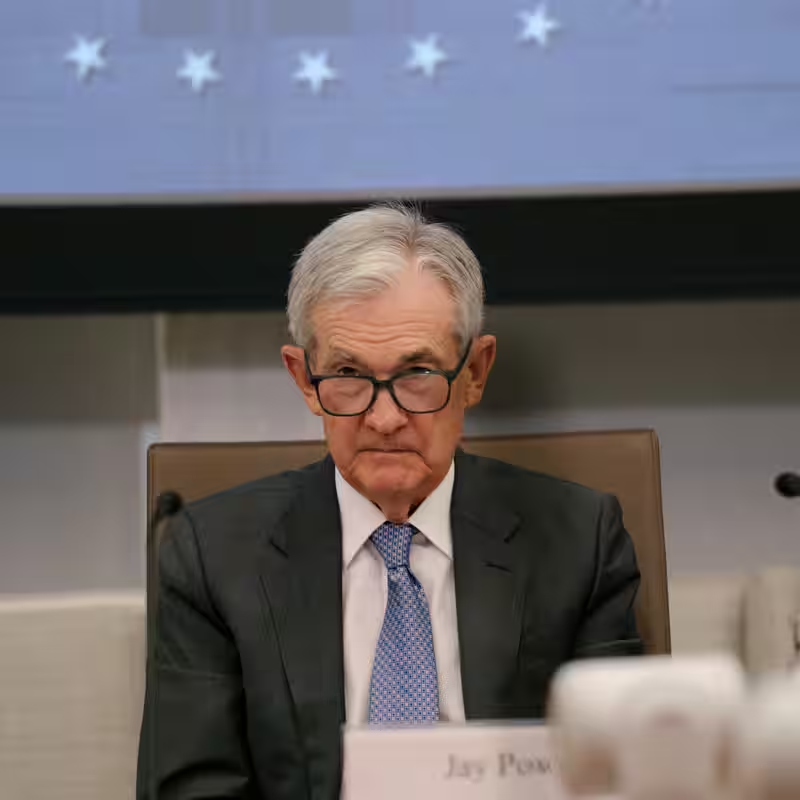Fed Cuts Rates Again Amid Economic Fog
In a move that surprised few but impacts millions, the Federal Reserve slashed interest rates by a quarter-point on Wednesday—its second consecutive cut—as it navigates a perfect storm of economic uncertainty, political gridlock, and a full-blown government shutdown.
With key economic data frozen and federal workers furloughed, Fed Chair Jerome H. Powell and his colleagues are essentially flying blind. Yet they’ve chosen to err on the side of caution, prioritizing labor market stability over inflation fears.
Table of Contents
- The October Rate Cut: What Happened
- The Government Shutdown’s Hidden Cost
- Will the Fed Cut Again in December?
- A Lone Hawk—and a New Dissenter
- Is Quantitative Tightening Ending?
- What This Means for You
The October Rate Cut: What Happened
The Federal Open Market Committee (FOMC) voted to lower the federal funds rate to a target range of 3.75%–4.00%. This follows a similar 25-basis-point cut in September and aligns with most policymakers’ projections from earlier this year.
“There is no risk-free path,” Powell reiterated during his post-meeting press conference—a phrase that has become the unofficial mantra of the Fed’s 2025 strategy.
The Government Shutdown’s Hidden Cost
Perhaps the most unusual factor in this decision: the Fed is operating without its usual data compass. Due to the ongoing government shutdown:
- The Bureau of Labor Statistics has halted the release of the October jobs report.
- The Consumer Price Index (CPI) for October may never be published.
- Key indicators on retail sales, housing, and manufacturing are indefinitely delayed.
Instead, the Fed is relying on private-sector surveys, weekly unemployment claims, and regional Fed reports—less comprehensive but still telling. These suggest a labor market that’s cooling, not collapsing, and inflation pressures from tariffs that are easing.
Will the Fed Cut Again in December?
Most officials still expect a third cut in December, completing the trio of reductions forecast in September. But Powell stopped short of confirming it. “Each meeting is live,” he said, emphasizing data dependence—even as official data vanishes.
Analysts say the December decision will hinge on two things: whether the shutdown ends (freeing up data) and whether financial markets show signs of stress.
A Lone Hawk—and a New Dissenter
The vote wasn’t unanimous. Stephen I. Miran, President Trump’s newest appointee to the Fed Board, once again pushed for a more aggressive half-point cut, arguing the “neutral rate” is closer to 2.5%—well below current levels.
Meanwhile, one unnamed official signaled in their economic projections that no further cuts should occur this year, reflecting internal tension between doves and hawks.
Is Quantitative Tightening Ending?
Beyond rates, the Fed signaled it may soon halt its balance sheet runoff—a process known as quantitative tightening (QT). Since 2022, the Fed has shrunk its holdings from $9 trillion to $6.6 trillion.
But strains in short-term funding markets and declining bank reserves ($3 trillion and falling) have raised alarms. Powell hinted Wednesday that QT could pause “in the near term” to ensure financial stability.
What This Means for You
For consumers and businesses:
- Mortgages & Loans: Slightly lower borrowing costs ahead, though banks may not pass on full cuts.
- Savings Accounts: Interest on CDs and high-yield savings may dip further.
- Stock Market: Equities often rally on rate cuts—but volatility remains high amid shutdown risks.
- Job Market: The Fed’s move aims to prevent layoffs, but uncertainty looms without government data.
In a time of unprecedented opacity, the Fed is betting that a little stimulus now is better than waiting for clarity that may never come.




